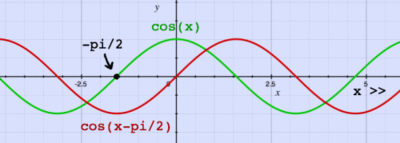TF EIM Chapt2
Jump to navigation
Jump to search
Alternating Current (AC)
Thus far we have discussed direct current circuits which were built from a battery (constant voltage supply).
Another type of circuit is one in which the current is driven in an alternating fashion. Typically the current is increased so some positive maximum value, then decreased until it passes through zero and reverses direction until it reaches another maximum value and then it is decreased again, passing though zero once more on its way to a positive maximum value.
Definitions
- frequency (, )
- The frequency is number of complete cycles which occur in 1 sec (cycles/sec = Hz)
- Angular frequency = = radians/sec
- Period
- The period is the time to complete one cycle = 1/
- Amplitude
- The change in the current from zero to its most positive value
- peak-to-peak
- The amount the current changes from its largest positive value to its most negative.
- phase
- The time a current takes to reaches its maximum value compared to another alternating current
- Note
- The above definitions can be used for voltage as easily as current.
Mathematical description
Trigonometric
I_{rms}
With this functional form for the alternating current we can now calculate another property, the RMS or root mean square.
The RMS quantifies an average fluctuation of the alternating current such that
- where T represent the time interval over which the average is calculated ()
